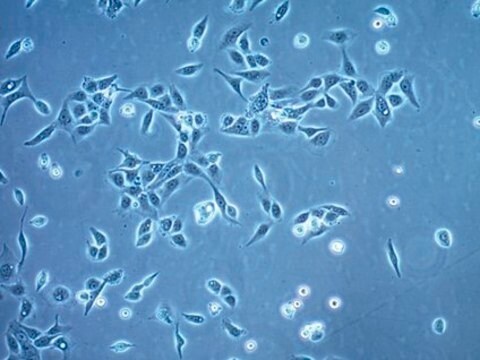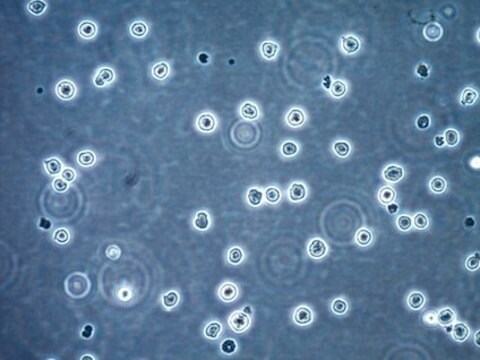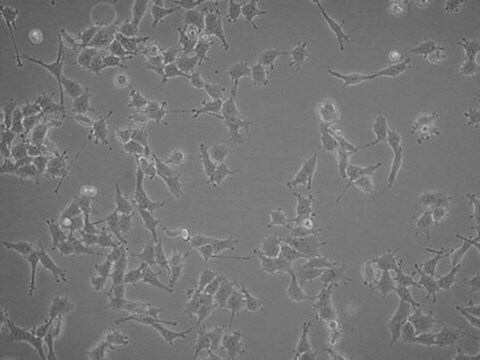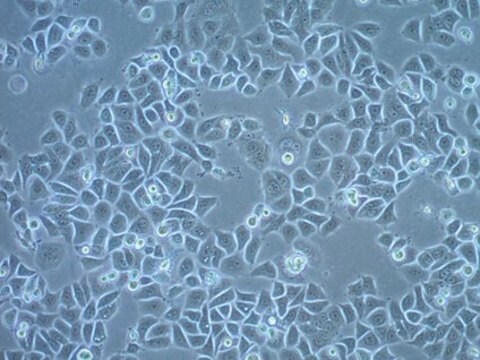SCC236
YUMM3.3 Mouse Melanoma Cell Line
Mouse
Synonim(y):
Yale University Mouse Melanoma 2.1 cell line, Yale University Mouse Melanoma cell line
About This Item
Polecane produkty
product name
YUMM3.3 Mouse Melanoma Cell Line,
pochodzenie biologiczne
mouse
Poziom jakości
opakowanie
vial of ≥1X10⁶ cells/vial vials
producent / nazwa handlowa
Millipore
metody
cell culture | mammalian: suitable
Warunki transportu
liquid nitrogen
temp. przechowywania
−196°C
Opis ogólny
Zastosowanie
- Each vial contains > 1X106 viable cells.
- Cells are tested negative for infectious diseases by a Mouse Essential CLEAR panel by Charles River Animal Diagnostic Services.
- Cells are verified to be of mouse origin and negative for inter-species contamination from rat, chinese hamster, Golden Syrian hamster, human and non-human primate (NHP) as assessed by a Contamination CLEAR panel by Charles River Animal Diagnostic Services.
- Cells are negative for mycoplasma contamination.
Cechy i korzyści
Opis wartości docelowych
Przechowywanie i stabilność
Oświadczenie o zrzeczeniu się odpowiedzialności
Kod klasy składowania
10 - Combustible liquids
Klasa zagrożenia wodnego (WGK)
WGK 3
Temperatura zapłonu (°F)
Not applicable
Temperatura zapłonu (°C)
Not applicable
Certyfikaty analizy (CoA)
Poszukaj Certyfikaty analizy (CoA), wpisując numer partii/serii produktów. Numery serii i partii można znaleźć na etykiecie produktu po słowach „seria” lub „partia”.
Masz już ten produkt?
Dokumenty związane z niedawno zakupionymi produktami zostały zamieszczone w Bibliotece dokumentów.
Nasz zespół naukowców ma doświadczenie we wszystkich obszarach badań, w tym w naukach przyrodniczych, materiałoznawstwie, syntezie chemicznej, chromatografii, analityce i wielu innych dziedzinach.
Skontaktuj się z zespołem ds. pomocy technicznej






